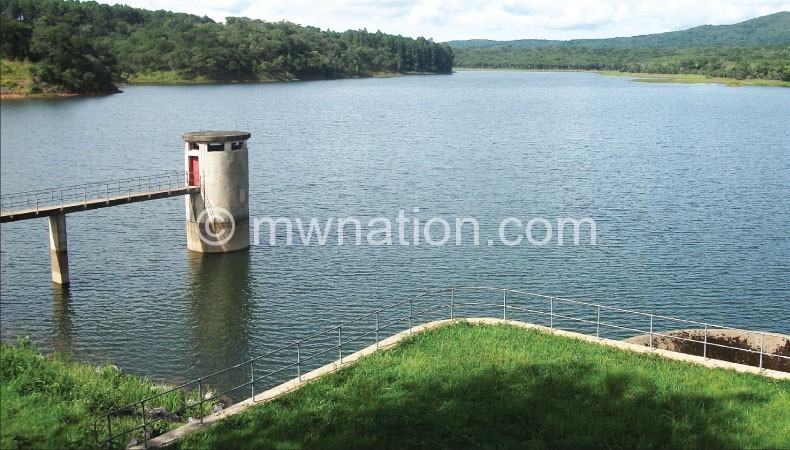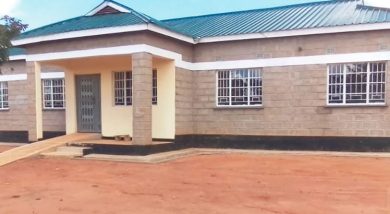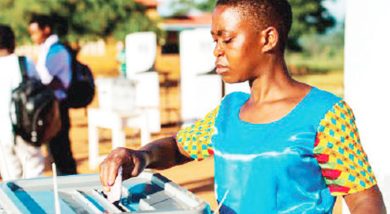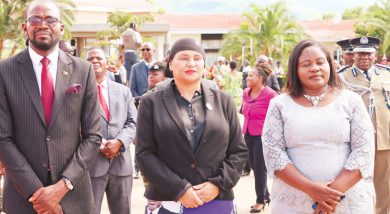Water crisis looms as El Nino bites
Malawians should brace themselves for serious water problems due to El Nino weather that has affected rainfall patterns in Malawi and other countries in eastern and southern Africa.
Weather experts say rainfall volumes during the 2015/16 rainy season have fallen short of expect quantities, affecting agriculture as well as water supply.
Adams Chavula, principal agro-meteorologist responsible for weather and climate services in the Department of Climate Change and Meteorological Services, said this week that there have been huge deficits in rainfall especially in the Central and Southern regions.
“Cumulative rainfall figures by 10 March 2016 show that the whole of southern Malawi and Ntcheu, Dedza, Salima, Nkhotakota, Dowa, Mchinji and Kasungu in the Central Region received less rainfall this season compared to the same period last season,” Chavula observed.
“The largest rainfall deficits exist in the South where some areas have a difference of over 1 000 mm.”
Figures from the department indicate that as of March 10, some parts of the country had registered substantively reduced amounts of rainfall compared to the same stage last year.
Lujeri in Mulanje tops the list of rainfall deficits registering a record drop of 1332.9mm followed by Mpemba in Blantyre at 987.3mm and Makanjira in Mangochi at 775.2mm.
Dean of agriculture at the Lilongwe University of Agriculture and Natural Resources (Luanar), Patasani Kumambala, said the country is on a path to dryness due to this year’s rainfall patterns.
Kumambala said: “Low rainfall has a long-term effect on domestic water availability especially in the dry months of the year. River flow in the dry season depends on ground water recharge which is a function of the amount of water a catchment absorbs during the rainy season.
“This problem is even worse when the catchment area has lost vegetation cover.
“As things are at the moment, it is very likely that water supply from the country’s major reservoirs will be affected by the low rainfall the country has experienced this year. Low rainfall also has an impact on power generation on all the power plants along the Shire River as it depends on water from Lake Malawi.”
In an interview on Wednesday, Lilongwe Water Board (LWB) spokesperson Bright Sonani acknowledged the threat posed by the change in rainfall patterns this year against the board’s goal of providing potable water to customers within its area of jurisdiction.
“We have been affected by the reduction of rains this year especially in terms of water production and treatment capacity,” Sonani said. “As such, soon we will be announcing measures that we shall employ to ensure things do not go out of hand.
“Normally our reserve dams were supposed to be spilling by now but as we speak one dam is not yet full. This implies that we will have to start using our reservoirs earlier than is normally the case.”
He further bemoaned the siltation of the Dzalanyama dam which has been caused by heavy deforestation around its catchment area.
Sonani said LWB is at the moment increasing its production capacity to reach 125 000 cubic metres as demand has swollen to 120 000 cubic metres.
Northern Region Water Board (NRWB) chief executive officer Titus Mtegha indicated that his board is yet to feel the effects of the rains reduction this year.
According to the rainfall pattern report, only the Northern Region has so far received close to normal rain.
“The production of water in the NRWB has not been affected by the El Nino phenomenon, though the rainfall patterns in some areas were affected,” Mtegha said
“We attribute this to a number of initiatives and measures the board has taken especially in Mzuzu City such as the installation of two submersible pumps on Lunyangwa River drawing raw water from tributaries to the treatment plant, resulting in partially or completely closing water which is drawn from the Lunyangwa Dam,” he said.
Mtegha said NRWB’s Mzuzu Dam’s level is currently at 1283.11 metres while at the same stage last year it read 1283.40 metres—registering a slight reduction of 0.29metres.
NRWB works to satisfy the water demand of 31 000 cubic metres per day.
Blantyre Water Board (BWB) spokesperson Priscilla Mateyu was upbeat on Thursday, saying the board would not be heavily affected by El Nino despite that the Southern Region recorded a sharp drop in rainfall this year.
Observed Mateyu: “So far, there is no effect of the dropped rainfall levels. Indeed the board gets water from Lake Malawi through the Shire River.
“The abstraction is only a percent of the volume of water in the river, so the effect is negligible. At the moment there is no noticeable effect.
“With improved pumping, we have more water now in the reservoirs. However, the water levels in Mudi Dam are still unsatisfactory as there has been no overflow this year.”
But Central Region Water Board (CRWB) reported that their reservoirs were under threat due to the climatic changes.
CRWB spokesperson Zephelino Mitumba said the board has had to make adjustments to its water pumping operations to mitigate the effects of low water levels.
“El Nino has definitely made water production and supply a challenge to Central Region Water Board in general,” Mitumba said.
“The board derives its water from surface and underground sources and with the onset of this phenomenon, water levels and quantities have reduced tremendously in the streams, rivers and dams—and even in Lake Malawi.”
According to Mitumba, in the 2014/2015 season, CRWB pumped 7 million cubic metres of water but by mid 2015/2016, the board had only managed to pump 3.6 million cubic metres.
“We are coming to the end of the rainy season and with the current rainfall patterns, we will not be any closer to achieving or surpassing last year’s volumes.”
As a means to boost capacity the board has, among other things, drilled boreholes and enhanced ground water exploration operations.
The Southern Region Water Board was not available for comment as we went to press.
Forestry experts have blamed the alarming rate of deforestation in the country as one of the triggers of climate change despite efforts by the government and the private sector to replant trees.
In an earlier interview, director of forestry, Clement Chilima, said while trees have been replanted across the country for many years, there has been minimal impact as many trees do not survive the first five years. n





